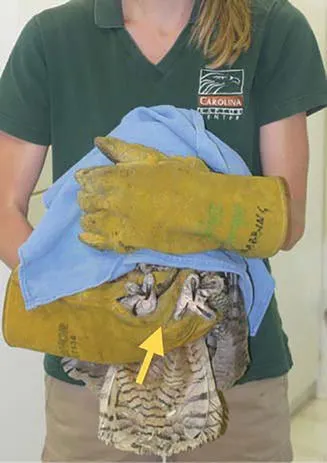
- 360 pages
- English
- ePUB (mobile friendly)
- Available on iOS & Android
Raptor Medicine, Surgery, and Rehabilitation
About This Book
Comprehensive, practical and extensively illustrated, this book accumulates years of practical knowledge when dealing with injured birds of prey. Written by a practicing veterinarian it is a concise, helpful, day-to-day guide which outlines everything from handling and the intake examination, through to practical procedures and the treatment of a comprehensive range of conditions and injuries. Also covering advice on housing, rehabilitation and eventual release, and fully updated throughout, this new edition incorporates new images as well as new and expanded information on electrocution, pesticides, feeding puppets and species habitats. With plenty of new 'raptor tips' and questions, Raptor Medicine, Surgery, and Rehabilitation, 3rd Edition, includes handy hints, clinical pearls and retains its emphasis on practical procedures throughout. Forming a complete and approachable guide to raptor veterinary care, this book also features numerous rapid reference charts and appendices.
Frequently asked questions
Information

Table of contents
- Cover
- Half Title
- Title
- Copyright
- Contents
- About the Author
- Foreword
- Acknowledgments
- Abbreviations
- 1 Handling and Physical Examination
- 2 Anatomy and Physiology
- 3 Species Overview
- 4 Fluid Therapy and Treatments
- 5 Ophthalmology
- 6 Infectious Diseases
- 7 Miscellaneous Conditions
- 8 Anesthesia
- 9 Soft Tissue Surgery
- 10 Orthopedics
- 11 Endoscopy
- 12 Caring for Nestlings and Hatchlings
- 13 Feathers and Aging
- 14 Clinical Pathology
- 15 Housing and Husbandry
- 16 Capturing Trapped Birds
- 17 Time for Release!
- Appendix A: Feeding Guide
- Appendix B: Formulary
- Appendix C: Anesthetic Record
- Appendix D: Wrapper Patterns
- Appendix E: Laws and Regulations
- Appendix F: Body Weights during Development
- Appendix G: Building a Nest
- Appendix H: Feeding Puppets
- Appendix I: Resources
- Index
- Cabi
- Back